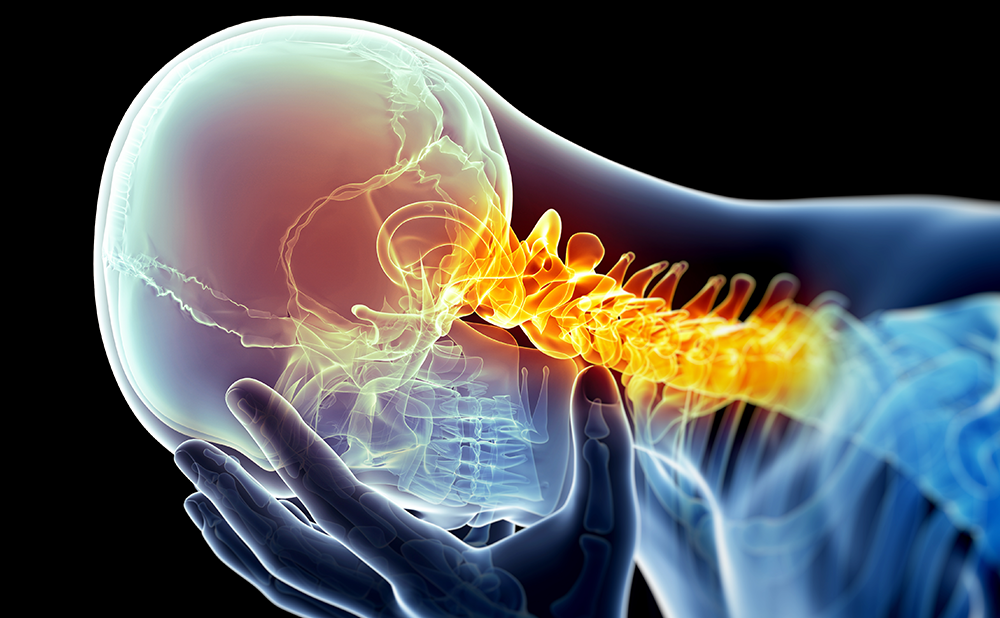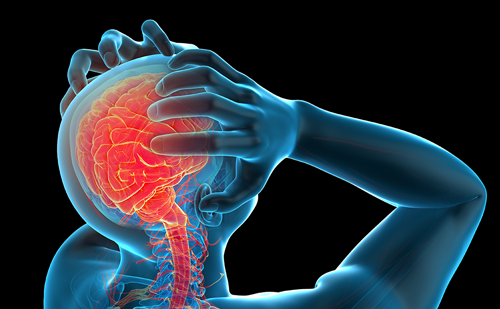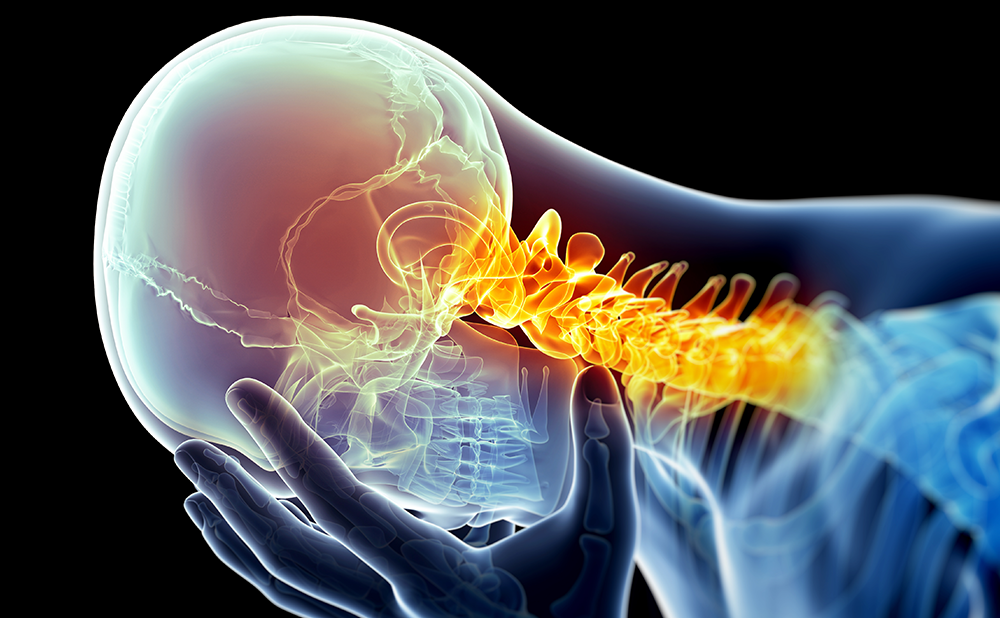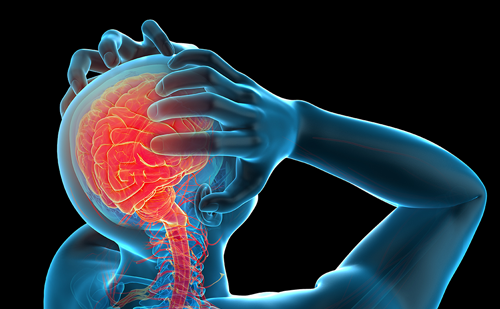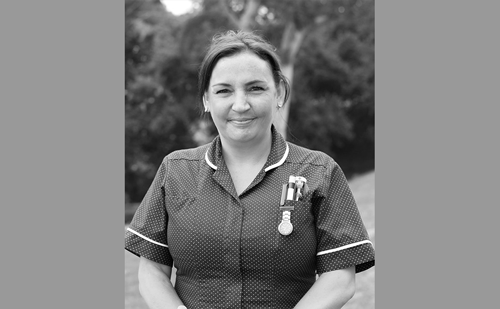Neuromodulation (peripheral nerve neurostimulation [PNS] and central neurostimulation [CNS]) is a new promising treatment for headache disorders. PNS includes occipital nerve stimulation (ONS), vagal nerve stimulation (VNS), and stimulation that targets the supraorbital and sphenopalatine ganglion (SPG) stimulation. CNS includes single pulse transcranial magnetic stimulation (sTMS).
Occipital nerve stimulation
Nociceptive inputs from dural and C-2 afferents converge in the brainstem trigeminal nucleus caudalis (TNC). Second-order neurons in the spinal cord and the TNC are modulated by descending projections from the periaqueductal gray (PAG); nucleus raphe magnus (NRM); and the rostroventral medulla (RVM).1,2 ONS might exert its action by decreasing excitability of secondorder nociceptors in the TNC.3 ONS may restore balance within dysfunctional pain control centers. ONS may be a symptomatic treatment and does not change disease outcome, since cranial autonomic features persist in the absence of pain in some patients4 and painful attacks return if stimulation is discontinued.5
There are three controlled trials of ONS in patients with chronic migraine (CM). Subjects in the Occipital Nerve Stimulation for the Treatment of Chronic Migraine Headache (ONSTIM) study were randomized to: adjustable stimulation (AS); sham stimulation (PS); or continued medical management (MM).6 Many outcomes showed numerical superiority (although not necessarily statistically significant superiority) of AS over PS and over continued MM. Three-month responder rates were 39% for AS, 6% for PS, and 0% for MM.
A second prospective, randomized, multicenter, double-blind, controlled study enrolled 125 subjects with CM. They were implanted with a neurostimulation system (St Jude Medical Neuromodulation Division, Plano, TX) and randomized to an active or control group for 12 weeks.7 Although there was not a significant group difference in the number of patients with a 50% reduction on the visual analog scale (primary endpoint), there was a significant difference at 30% (p<0.05), which is considered clinically significant.
In a third prospective, double-blind, randomized, controlled, multicenter trial, 139 patients were randomized to receive either active stimulation or PS.8 At 12 weeks ONS did not produce statistically significant benefits in relation to PS on the primary endpoint.
Sphenopalatine ganglion stimulation
SPG contains parasympathetic efferents destined for meningeal blood vessels, the lacrimal gland, and nasal mucosa. SPG stimulation may work by either interrupting SPG parasympathetic outflow or modulating the sensory processing in TNC via slow neuromodulatory changes to the pain processing structures of the brain stem.9 A US multicenter, randomized, sham-controlled study evaluating an implanted SPG neurostimulator for the treatment of cluster headache is now underway.
Supraorbital nerve stimulation
The efficacy of a transcutaneous supraorbital stimulator (Cefaly, STX-Med., Herstal, Belgium) in migraine prevention was tested in a double-blinded, randomized, sham-controlled trial.10 The 50% responder rate was significantly greater (p<0.023) in the active group (38.1%) than in the sham group (12.1%).
Vagal nerve stimulation
VNS has been studied as a treatment for migraine and other primary headache disorders. In three retrospective studies, at least 50% reported a substantial (>50%) reduction in migraine frequency after at least 6 months of stimulation.11,12 In an open-label, single-arm, multiple-attack study, 26 migraine patients were treated for 79 moderate or severe migraine attacks (or treated after 20 minutes of mild pain) with two 90-second doses at 15-minute intervals, delivered to the right cervical branch of the vagus nerve.13 At 2 hours, headache response rate (pain mild or absent at 2 hours) was 46/79 (58%), and 22/79 patients (28%) were pain-free. At 2 hours, 76 of 79 (96%) were improved or had not worsened over baseline. Treatment-related adverse effects were limited to transient muscle or local tissue irritation and two reports of lightheadedness, most of which resolved immediately after treatment and all within 2 hours of treatment.
VNS may suppress the development of central trigeminal sensitization. Using a rat model of trigeminal allodynia, noninvasive VNS (nVNS) suppressed the behavioral response and neurotransmitter changes following the induction of trigeminal pain by infusing an inflammatory cocktail onto the dura in awake rats three times per week for 4 weeks.14
Central neurostimulation
sTMS is a safe, noninvasive method by which weak electrical currents are induced in the brain by a rapidly changing magnetic field.15 When sTMS is applied to the head, the magnetic field passes through the skull, inducing mild electric currents in the brain that excite and depolarize neurons in the brain. sTMS in animal models inhibits cortical spreading depression and significantly decrease spontaneous neuronal firing of third order thalamic neurons and C-fiber activity in response to dural vessel stimulation.
sTMS was tested in individuals with migraine based on the hypothesis that a fluctuating magnetic field delivered by the device would, when applied to the back of the head, induce electrical current and disrupt cortical spreading depression. A randomized, double-blind, parallelgroup, multicenter, two-phase, sham-controlled study that enrolled 267 adults was conducted,16 in which all individuals had to meet International Classification of Headache Disorders II criteria for migraine with aura, with visual aura preceding at least 30% of migraines, followed by moderate or severe headache in more than 90% of those attacks. Painfree response rates after two hours were significantly higher with sTMS (32/82 [39%]) than with PS (18/82 [22%]), for a therapeutic gain of 17% (95% confidence interval [CI] 3–31%; p=0.0179). Sustained pain-free response rates significantly favored sTMS at 24 hours and 48 hours posttreatment. No device-related serious adverse events were recorded, and incidence and severity of adverse events were similar between sTMS and sham groups.


